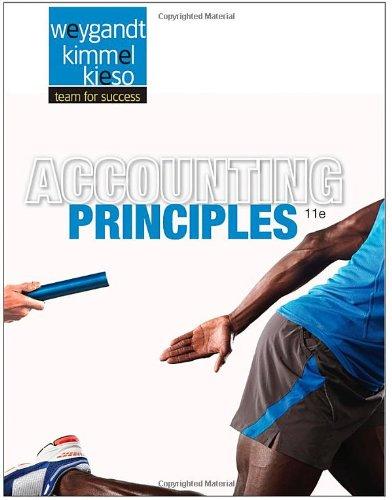Question
Here is an analysis of the one-year holding period returns produced by three different classes of assets over the 100-year period (1927-2018): Arithmetic Mean of
Here is an analysis of the one-year holding period returns produced by three different classes of assets over the 100-year period (1927-2018):
Arithmetic Mean of Returns
Standard Deviation of Returns
Common Stocks
11.72% 5.83% 3.38%
20.05% 11.59% 3.12%
Long-Term Treasury Bonds
Treasury Bills
1. Explain how these historical measurements confirm our basic understanding of risk and return.
(4 points)
2. The above table presents each asset class in descending order of the mean return and standard deviation. The table does not include measurements for other classes because the authors limited their analysis to the three classes presented.
Corporate bonds are a major class of investment assets that the authors excluded from their analysis. If corporate bonds had been included in the analysis, where would they have likely appeared in the above table? Explain
You recently received $1,000,000 because you were the 1,000,000th person to purchase a 20-ounce Sprite Zero. You want to invest the $1,000,000 by constructing a portfolio of securities.
After looking at the historical returns produced by the three classes of assets in the authors’ analysis, you decided to begin to construct your portfolio by allocating the $1,000,000 to two of the assets in the analysis. You decide on the following allocation scheme: 80% to common stocks and 20% to treasury bills.
You want to estimate your portfolio’s expected return and standard deviation based on your asset allocation scheme. You want to analyze the assets carefully to generate probability distributions of their expected returns. To satisfy your immediate curiosity, you decide to use the historical values relative to the securities from the above table to compute a very rough, preliminary estimate of your portfolio’s expected return and standard deviation.
a) Compute your rough estimates of the expected return from your portfolio and its standard deviation.
SUPPORTING COMPUTATIONS REQUIRED:
d) You subsequently analyze the common stock class. You identify three possible scenarios that could affect their expected returns and estimate the probabilities of each scenario as:
Best Case
expected return: 45%
Probability: 0.05
Optimistic case
expected return: 30%
probability: 0.15
most-likely case
expected return: 16%
probability: 0.60
Pessimistic case
expectwd return -8%
probability: 0.15
Worst case
expected return: -25%
probability: 0.05
Create an Excel worksheet to compute the following values for the common stock class
Expected Return on the Common Stock
Standard Deviation of the Expected Returns
EXCEL WORKSHEET REQUIRED:
c) Use the above amounts and the historical T-bill rate to compute the expected return and standard deviation of your portfolio.
SUPPORTING COMPUTATIONS REQUIRED:
Amount
Expected Return on Portfolio
Portfolio’s Standard Deviation
Step by Step Solution
3.41 Rating (154 Votes )
There are 3 Steps involved in it
Step: 1
Expected retu...
Get Instant Access to Expert-Tailored Solutions
See step-by-step solutions with expert insights and AI powered tools for academic success
Step: 2

Step: 3

Ace Your Homework with AI
Get the answers you need in no time with our AI-driven, step-by-step assistance
Get Started


